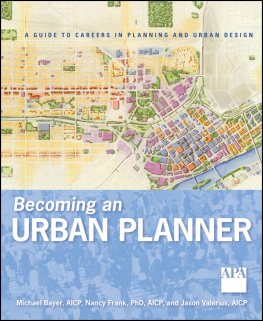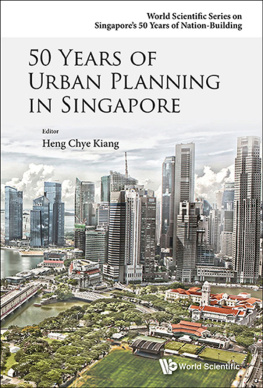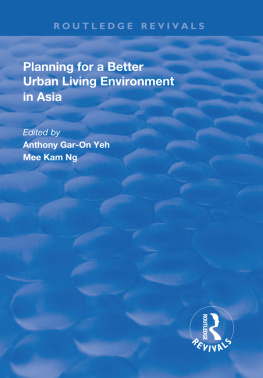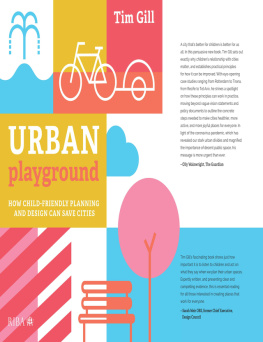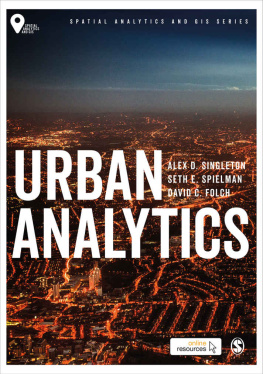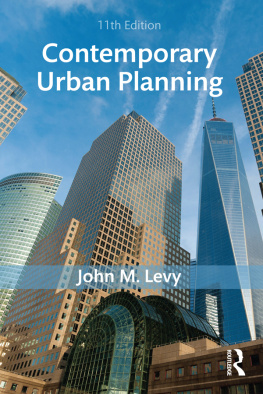Emerald Publishing Limited
Howard House, Wagon Lane, Bingley BD16 1WA, UK
First edition 2019
2019 Stefano Salata
Published under exclusive licence by Emerald Publishing Limited
Reprints and permissions service
Contact:
No part of this book may be reproduced, stored in a retrieval system, transmitted in any form or by any means electronic, mechanical, photocopying, recording or otherwise without either the prior written permission of the publisher or a licence permitting restricted copying issued in the UK by The Copyright Licensing Agency and in the USA by The Copyright Clearance Center. Any opinions expressed in the chapters are those of the authors. Whilst Emerald makes every effort to ensure the quality and accuracy of its content, Emerald makes no representation implied or otherwise, as to the chapters' suitability and application and disclaims any warranties, express or implied, to their use.
British Library Cataloguing in Publication Data
A catalogue record for this book is available from the British Library
ISBN: 978-1-78973-784-4 (Print)
ISBN: 978-1-78973-783-7 (Online)
ISBN: 978-1-78973-785-1 (Epub)
About the Author: A Note from Stefano Salata
Born in Grado (Italy) in 1983, I was awarded a PhD in Territorial Government and Urban Design in March 2014 (XXVI Cycle) at the Department of Architecture and Urban Studies (DAStU), Politecnico di Milano. I have a bachelor's degree in Urban and Territorial Planning (2006) from the Urban Planning Faculty (IUAV Venice) and a master's degree in Urban Planning and Territorial Policies (2008) from the School of Architecture, Politecnico di Milano. I am a Research Technologist in the Interuniversity Department of Regional and Urban Studies and Planning, Politecnico di Torino, and I have participated in the European project LIFE+Soil Administration Models for Community Profit (SAM4CP) with the same department.
Since 2009, my research activity as a member of the National Research Centre on Land Take Italy (CRCS) has focused on land use change analysis and its environmental effects. In 2014, I joined the Ecosystem Service Partnership (ESP), and I have been selected to co-host thematic sessions at the European and World ESP conferences. I am co-editor of many Italian national reports on land take (2010, 2012, 2014, 2016, 2017 and 2018) of CRCS and co-author of the chapter Policy and good practices in the book Urban Expansion, Land Cover and Soil Ecosystem Services edited by Ciro Gardi (Routledge), as well as many international publications on ecosystem services mapping and their utilisation for urban planning and territorial policies.
During my bachelor degree, I learnt the fundamental theories of the urban planning discipline: the economic, environmental and societal challenges of newly emerging territorial issues were explored and analysed within a multidisciplinary approach. My interest was mostly focused on analysing environmental issues, among others, as the most challenging for territorial policies. Subsequently, in Milan, I put into practice the previously acquired theoretical background, and during my master's degree I was able to gain some academic experience participating in a range of collaborative research projects related to Urban and Territorial Design Plans. On graduating, the Politecnico di Milano offered me a period of research training on land use planning activities, and I also continued to participate in many academic collaborations. At the same time, I started a professional career as an urban and territorial analyst.
Since 2009, my research activity has been focused on land take assessment through land use change analysis in post-metropolitan urban regions at different levels (using European, national, regional and local datasets, applying both the statistical differences approach or cross tabulation analysis). From 2011 to 2014, I completed my education with a PhD in Territorial Government and Urban Design. The PhD thesis pointed out the topics that were to characterise my research activity:
The growth of urban areas is not only happening to the compact city, and thus land use change analysis should be expanded to large-scale datasets.
Urban forms are multiple and of different characteristics, thus data are not always reliable for some kinds of urban dynamics such as the sprinkling morphology.
The effects of land use change are not only related to the phenomenon of urbanisation, therefore it is necessary to identify all possible land use changes and their effects rather than just those referred to as expansion in agricultural or natural zones.
The environmental impact of land use change needs to be assessed with composite indicators that apply the ecosystem services (ES) approach as a proxy for the Natural Capital state and its pressures under different land use scenarios.
During my PhD, I discovered the debate (theoretical and practical) around ES. As a planner by training, I was fascinated by ES modelling as a powerful tool to understand the spatial distribution of environmental values. Nonetheless, soon the problem of the spatial interpretation of statistical data (biophysical values) became relevant to my research. With the help of my PhD thesis supervisor (Prof. Ciro Gardi), I tried to find practical solutions to using ES for planning purposes. At the core of the ES approach, there is the awareness of preserving Natural Capital value as one of the fundamentals for social health and well-being, which nowadays is a key issue of spatial design for green infrastructures (GIs). As a senior Post-doctorate Researcher at the LIFE+SAM4CP research project (Politecnico di Torino), I had the opportunity to work on ES mapping for land use regulation purposes at the local level, discovering new techniques and tools for ES assessment. Their values (biophysics and economics) are fundamental for stakeholder participation and citizen involvement with environmental processes.
As a planner with a broad background in various disciplines, I am curious to find practical solutions for applying ES quantification and assessment to territorial policies rather than land use plans and projects. Such an approach requires significant improvements to the traditional way territorial government and land use planning are structured. From this point of view, I am aware that the ES approach is one that considers in a more holistic way the concept of sustainability because it accounts for the different kinds of services that Natural Capital provides. Planning for an increase in Natural Capital needs a significant renewal of the methodological approach that adequately supports the evaluation of land use scenarios. In this book, I will explore how one of the most promising elements in planning for urban resilience in order to foster the adaptive capacity of a socio-ecological system is, for example, the development of GIs.



